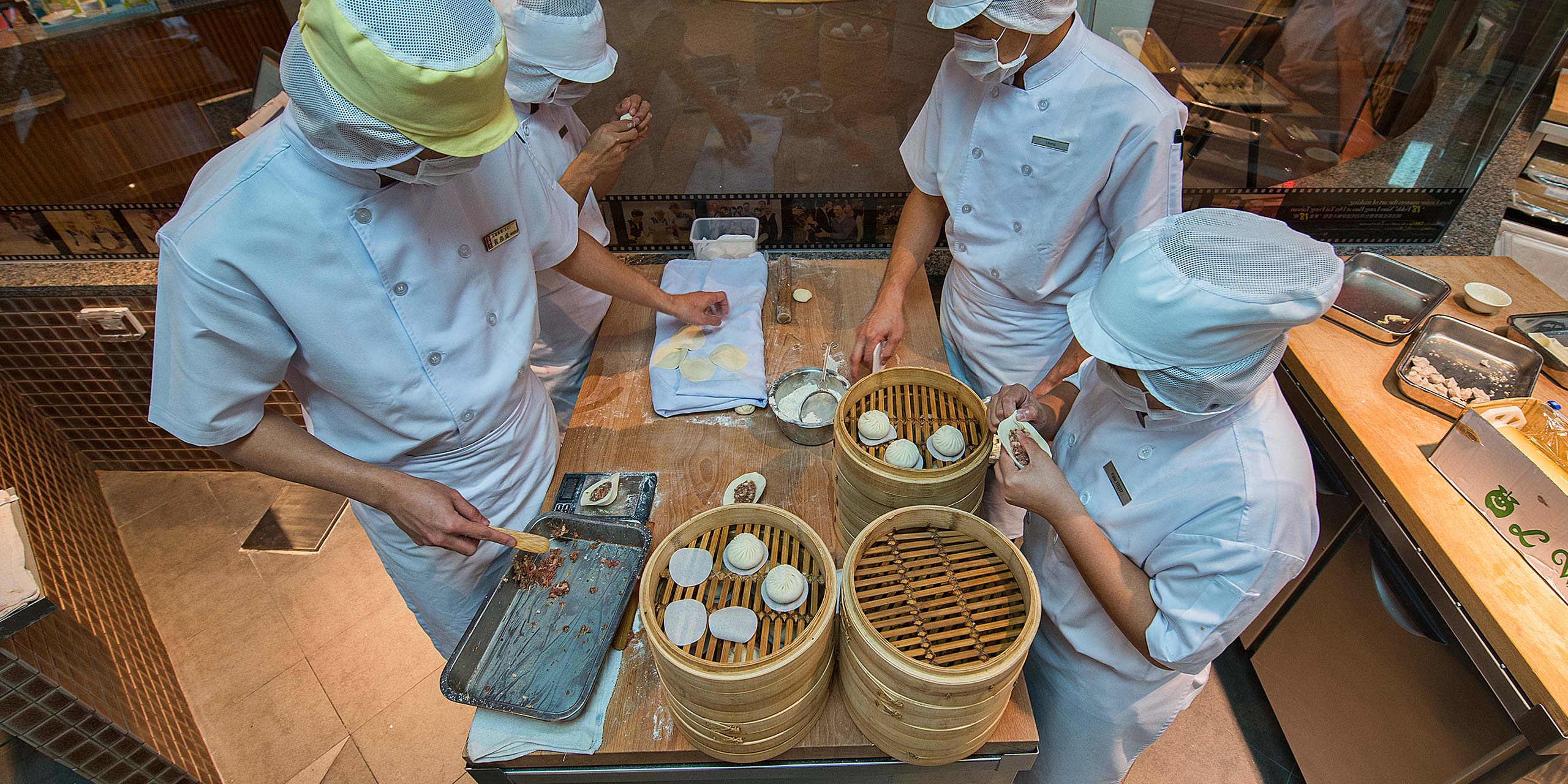
No amount of research can prepare you for navigating the Taiwan food scene. The island excels in fantastic eating. And, as I found out, the best bites aren’t necessarily common knowledge.
My wife and I make good food a core focus of our travel and do a significant amount of pre-trip research to ensure we can sample some of a destination’s best cuisine. But we realized on our second day in Taipei that there was an even better way to eat here.
While on a bus ride across town, we noticed lines of people everywhere, which we soon learned signified an eatery, and that no matter how nondescript or unhygienic it might look, it was bound to overwhelm us. One could just ride the bus here all day, get off whenever a queue appeared, and pretty much be guaranteed a wonderful eating experience.
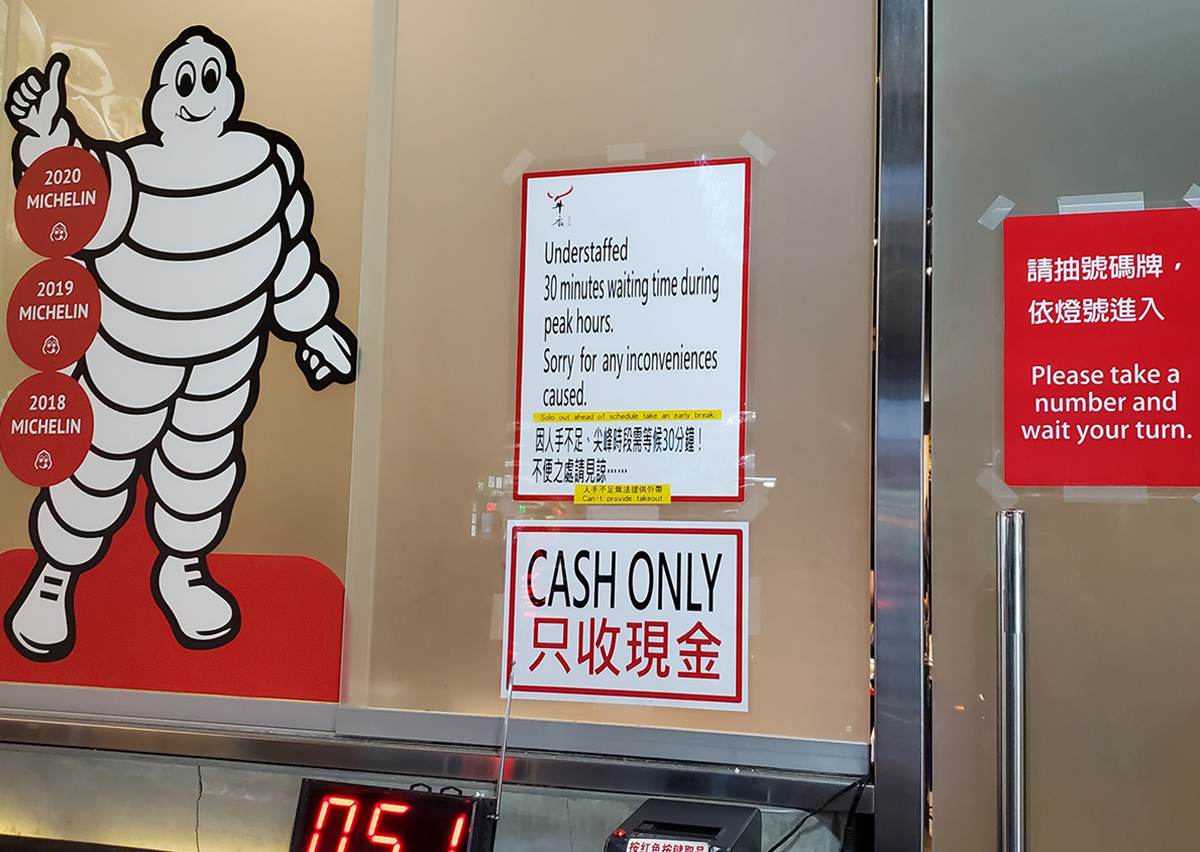
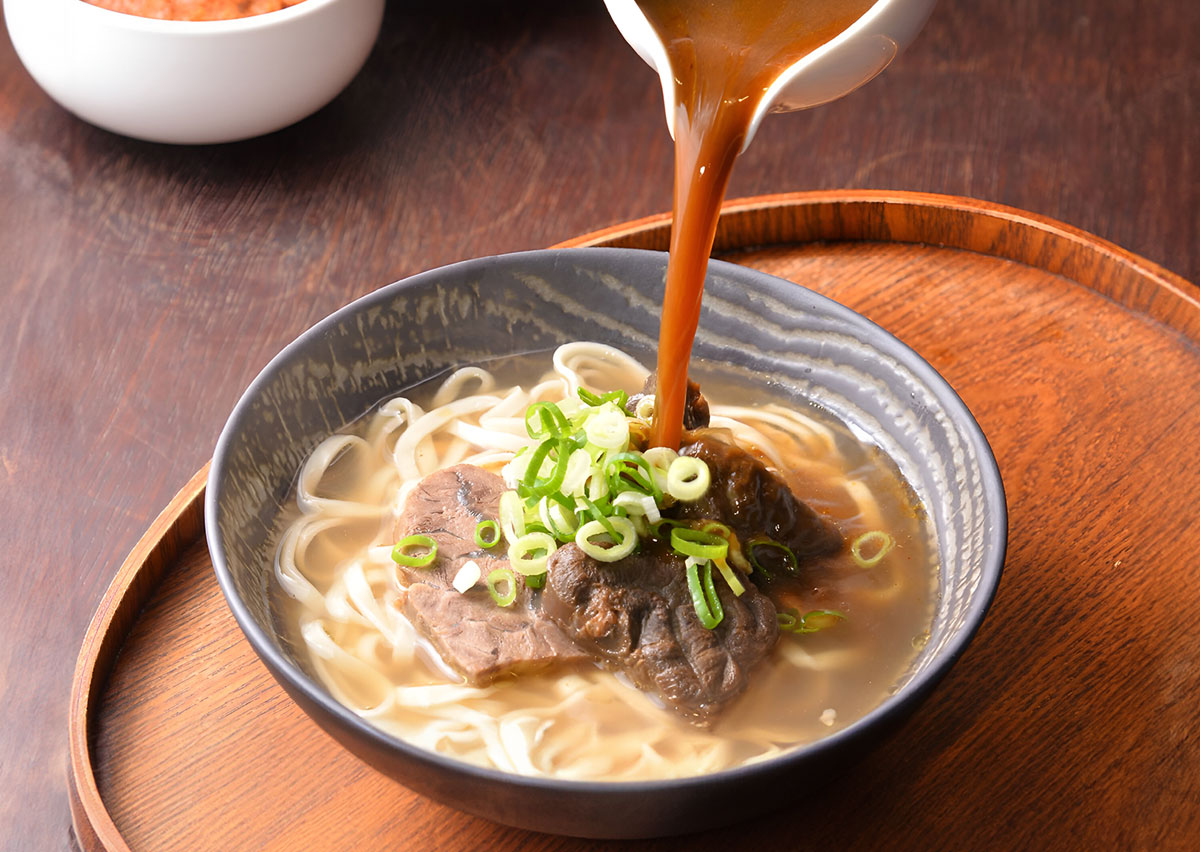
While Taiwan has its share of fine dining, the best eats are found street level. We started by making a beeline for some establishments given Michelin Bib Gourmand awards.
Named after Bibendum, the Michelin Man, these are places that are chosen by the prestigious guide for serving excellent food at pocket-friendly prices.
The most recent edition of the Michelin Guide has 139 such restaurants in Taiwan, quite astounding given the small size of the island. Most of them are stalls or hole-in-the-wall eateries that specialize in making just one dish.
We began with a visit to Niu Dian, famed for its beef noodles. Probably Taiwan’s most iconic dish, beef noodles is said to have been created by Kuomintang military vets who had fled from China after the war.
The secret to the succulent dish is the stock, in which bone marrow is simmered for hours, even overnight. While the original versions of the soup used cheap beef innards, these days you’ll find beef shank or even more premium wagyu or beef steak sitting in your bowl.
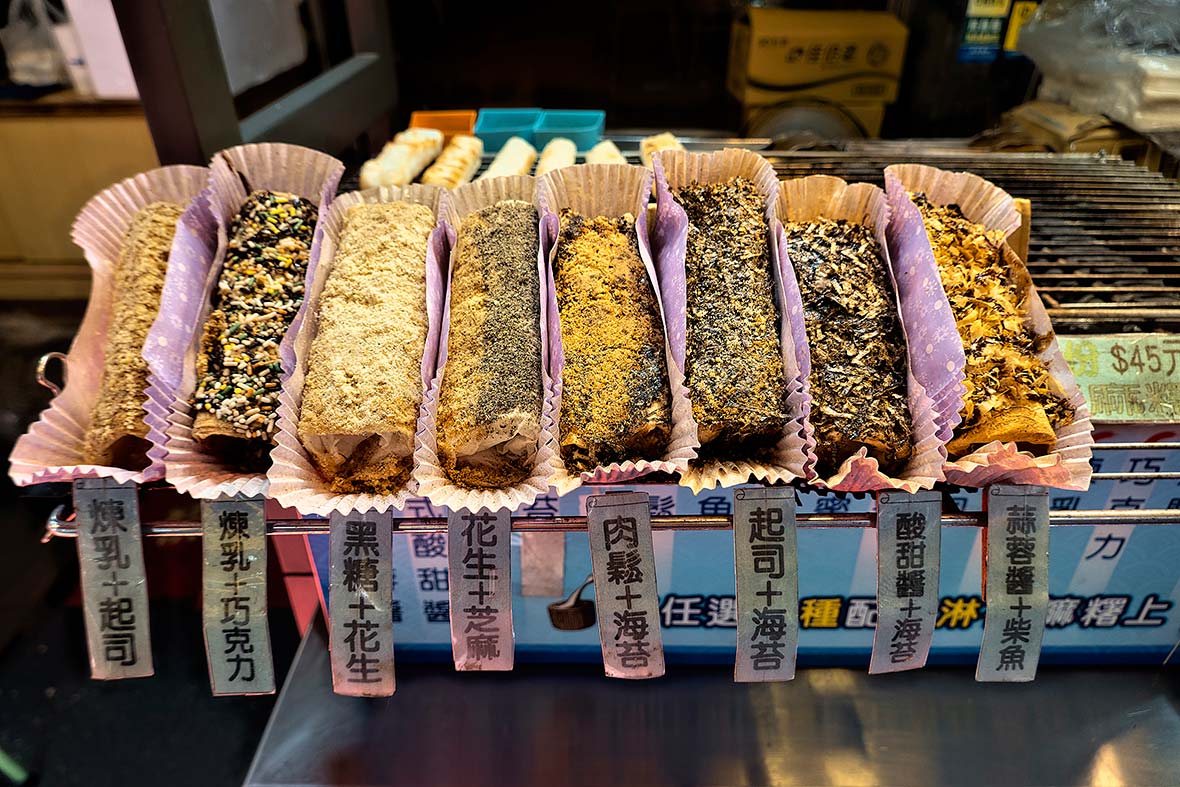
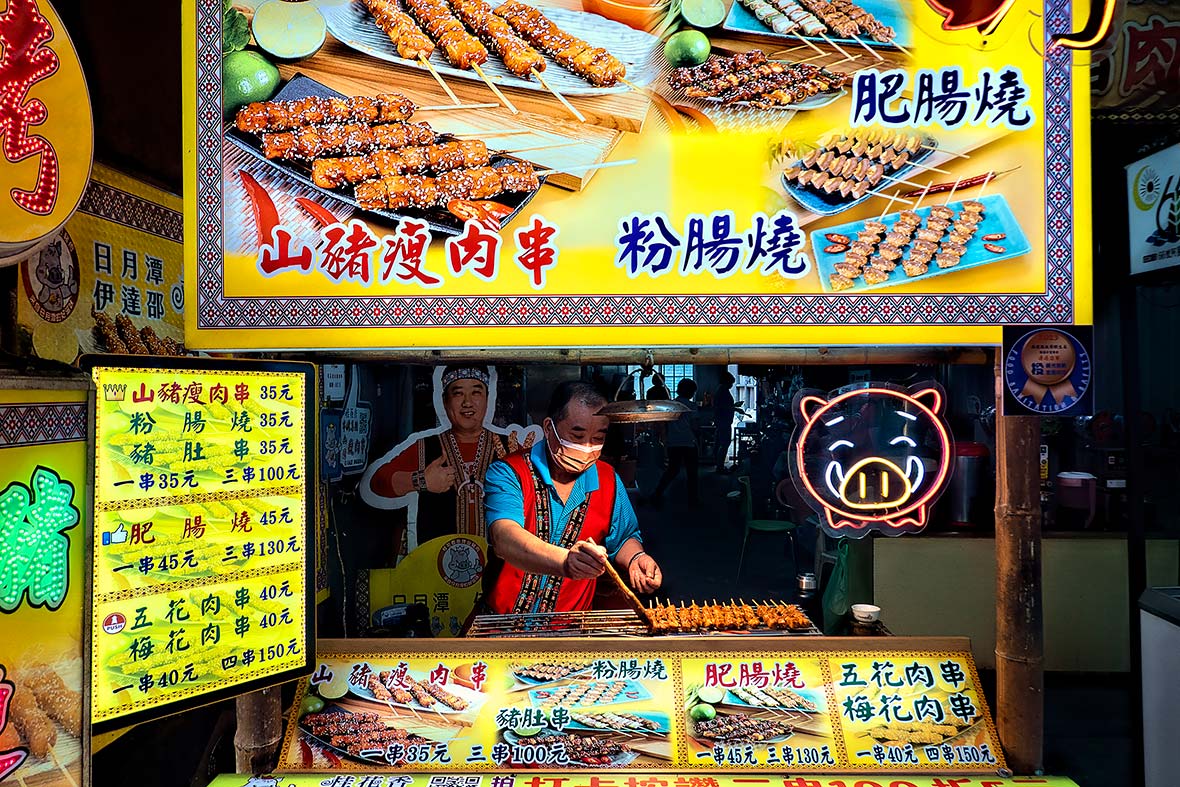
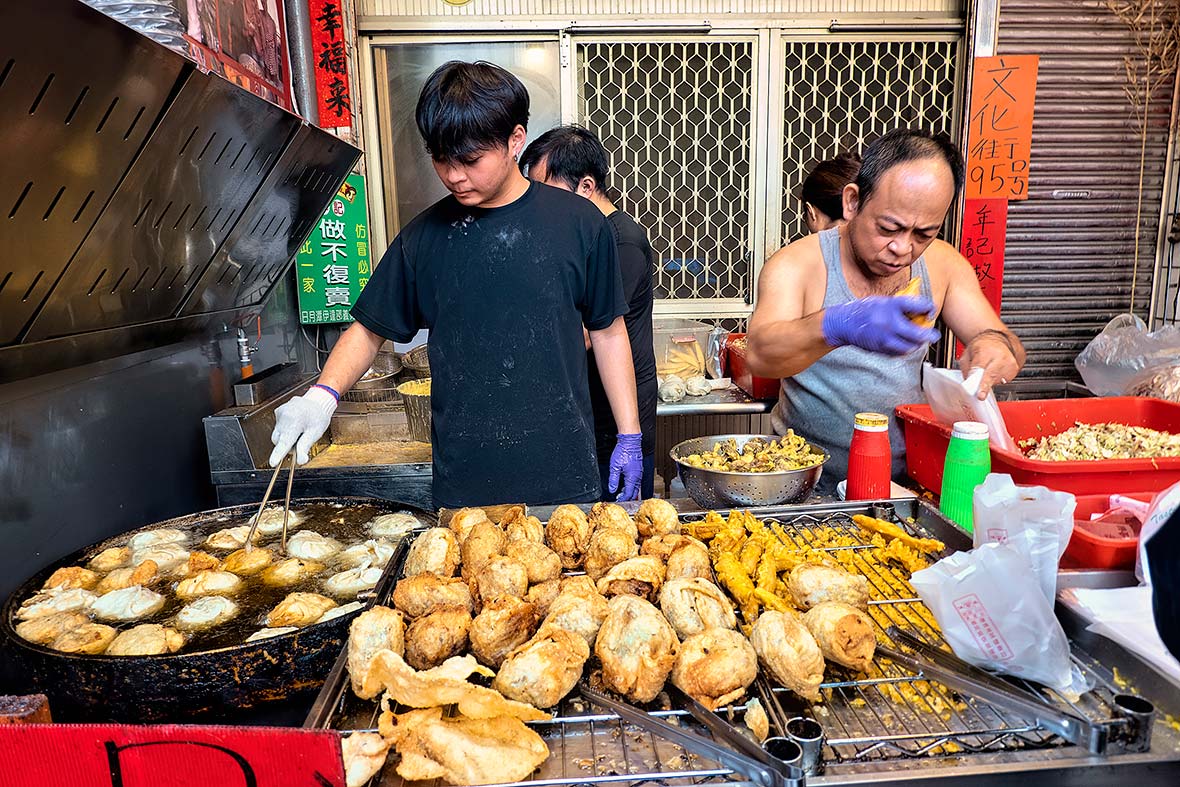
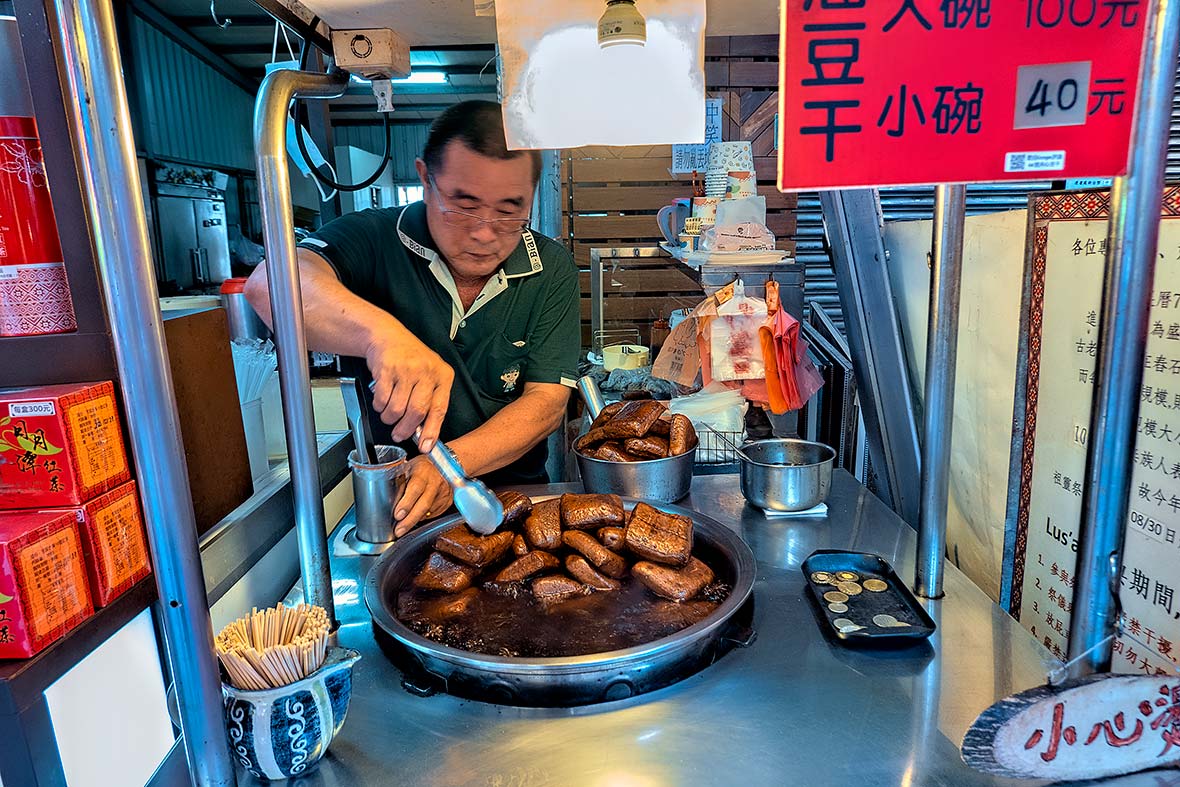
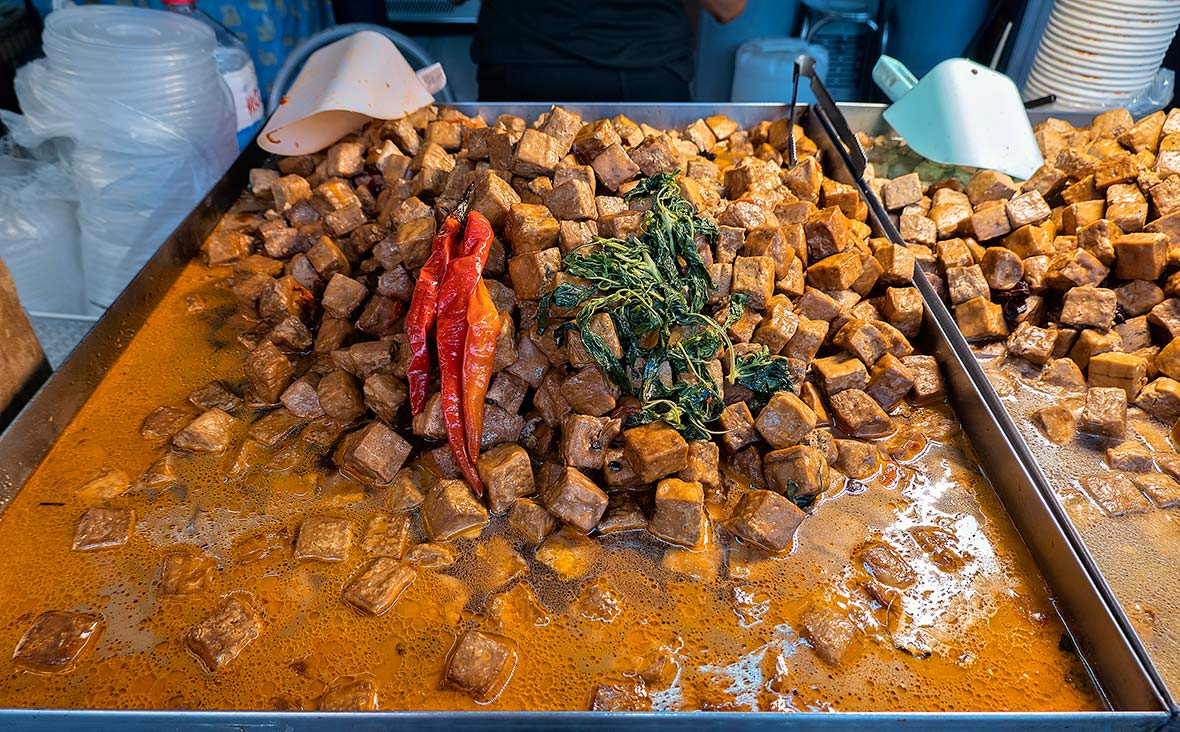
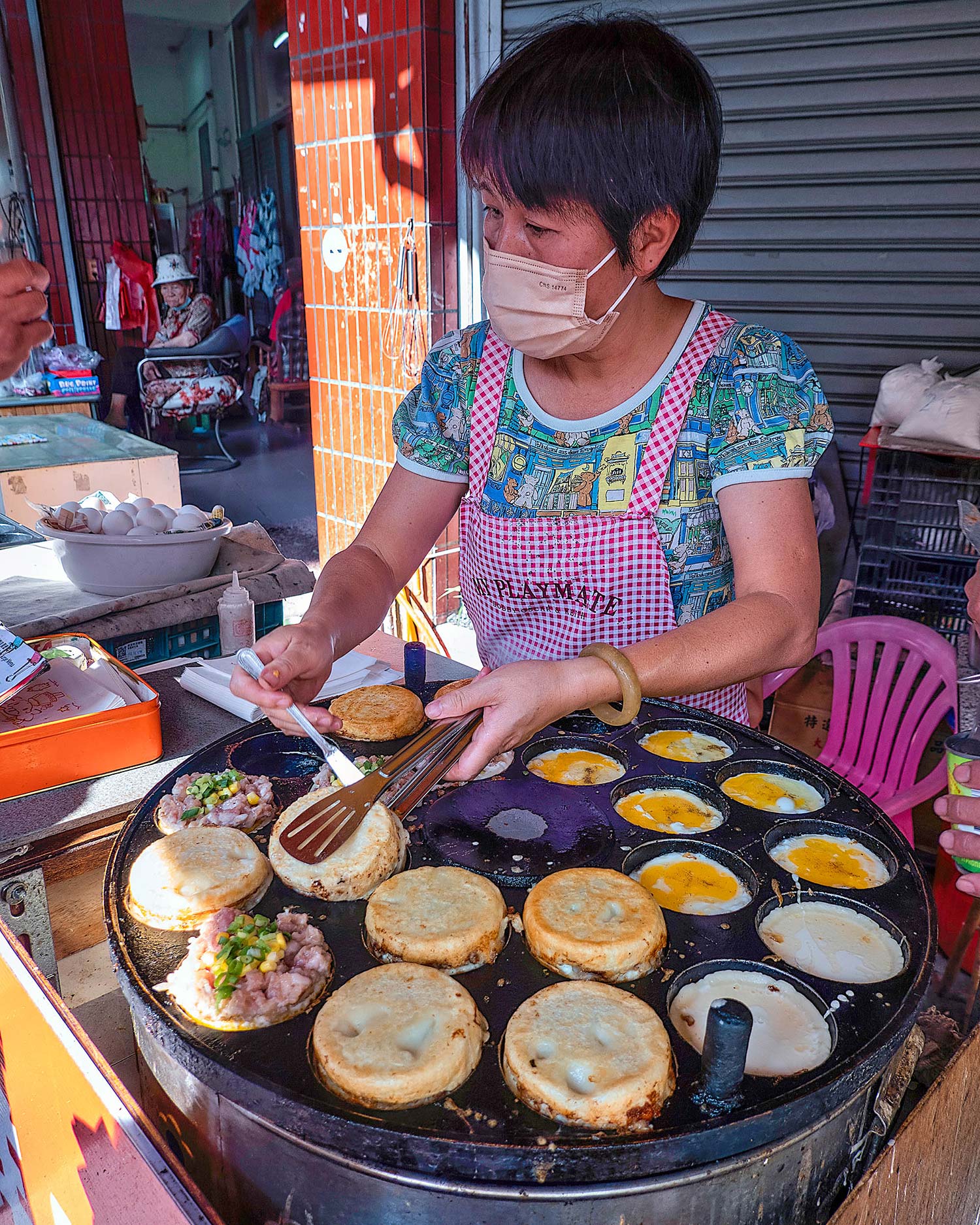
At Niu Dian, you take a number from a dispenser outside the restaurant, whose interior is hidden from outside view. A counter shows which number is currently being served, and when yours comes up, you can enter the eatery. The restaurant was awarded in the inaugural Michelin guide in 2018 and serves up a hearty bowl full of tendons, tripe, and shins of imported Australian beef, with the stock made by boiling bones from local “yellow” cows together with onions, ginger, and fermented bean paste for 24 hours.
We thought our trip was off to an astounding success, but a few days later we were wandering around famished and noticed a queue standing down a narrow alleyway. On further inspection, it turned out to be another beef noodle joint, this one even funkier, the equivalent of an American greasy spoon cafe. Sure enough, the tiny Liu Shandong had also received a Bib Gourmand in the initial Michelin guide and is loved by locals for its Shandong-style braised beef and extra thick handmade noodles that require 15 minutes of cooking time.
We found this to be even more succulent and aromatic than Niu Dian, with meaty beef breast used instead of shin. We were there at 4pm and were able to get a space at one of the six tables inside, which you share, as there are only 25 seats. By the time we left, the line was down the block with a waiting time of 40 minutes.
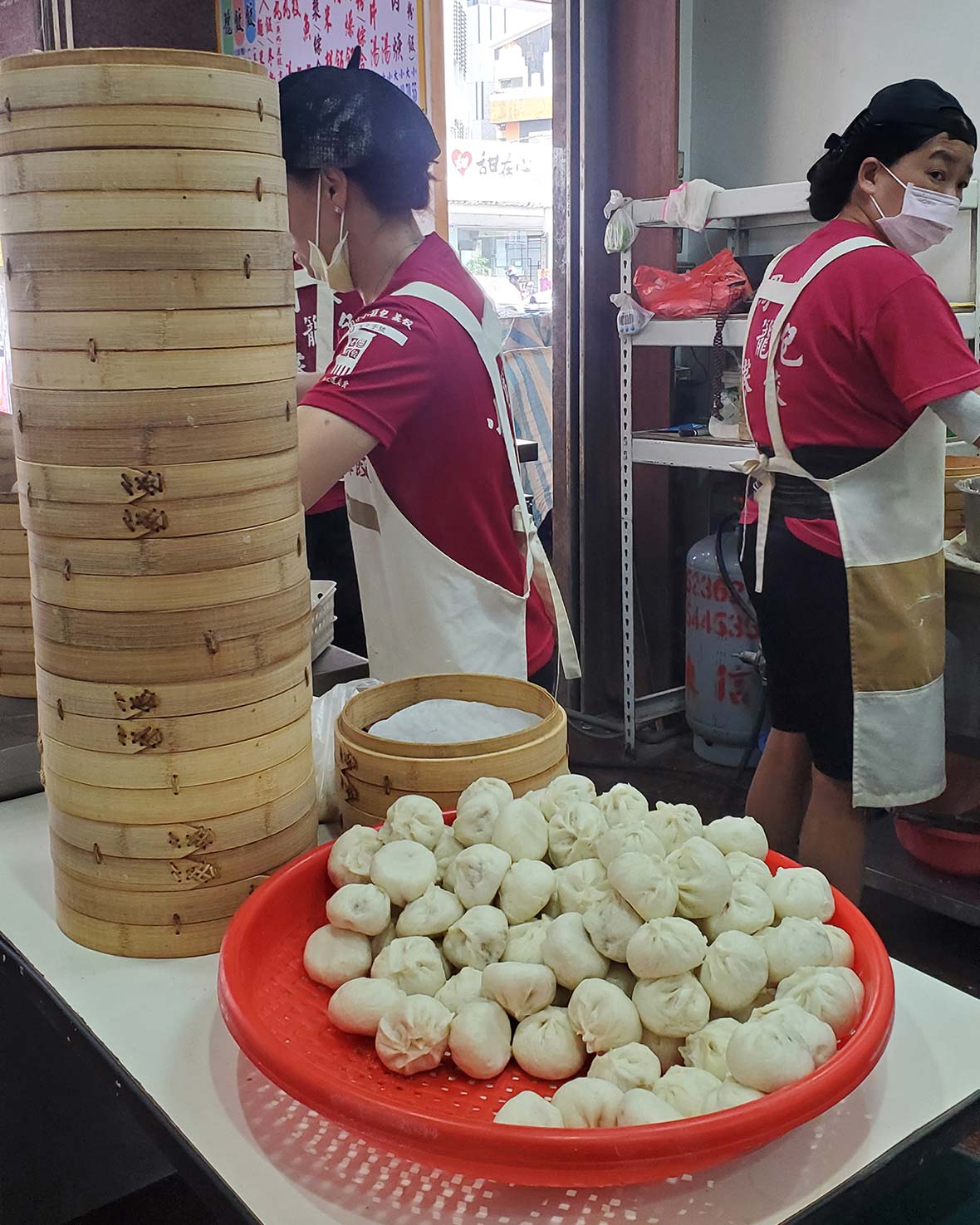
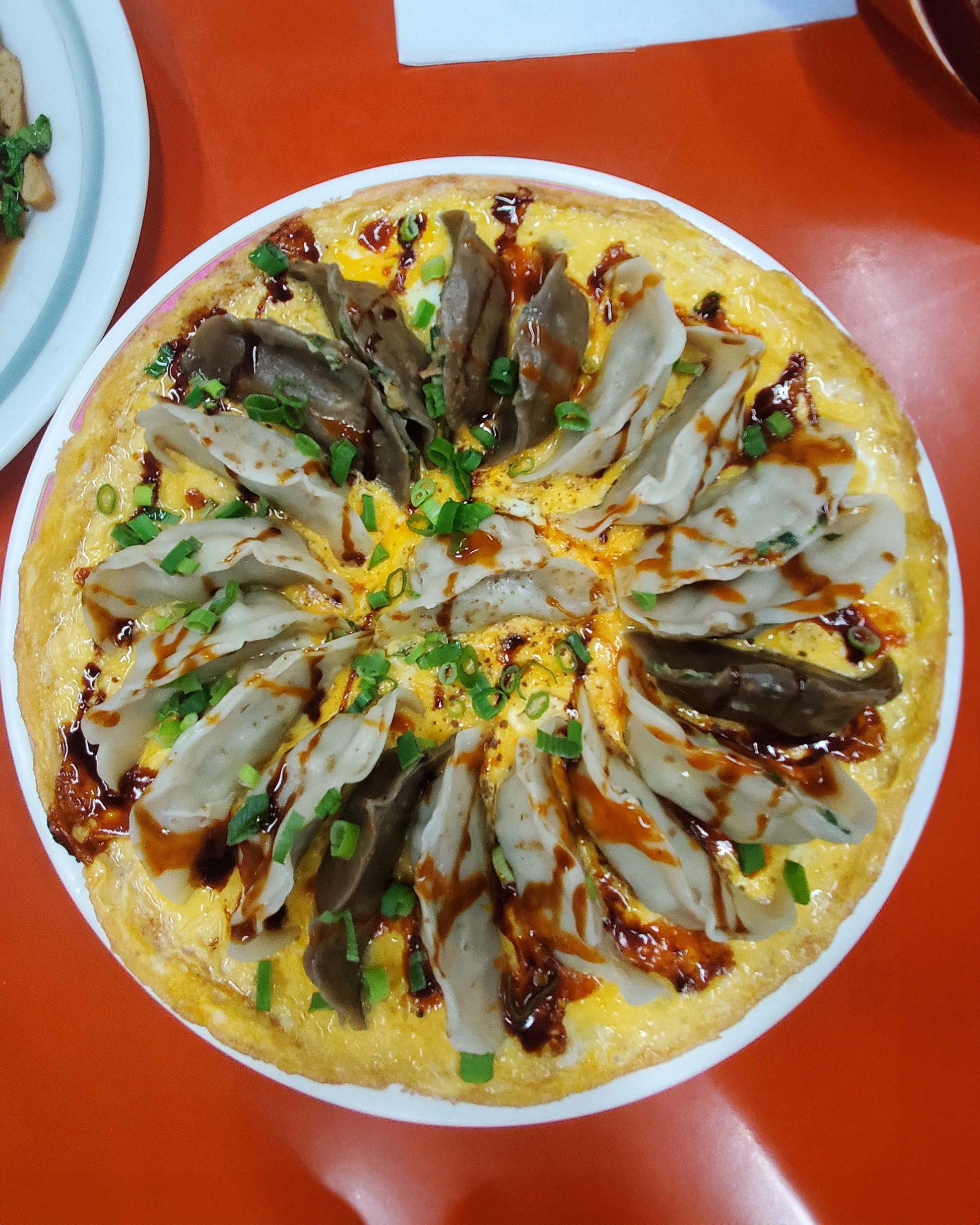
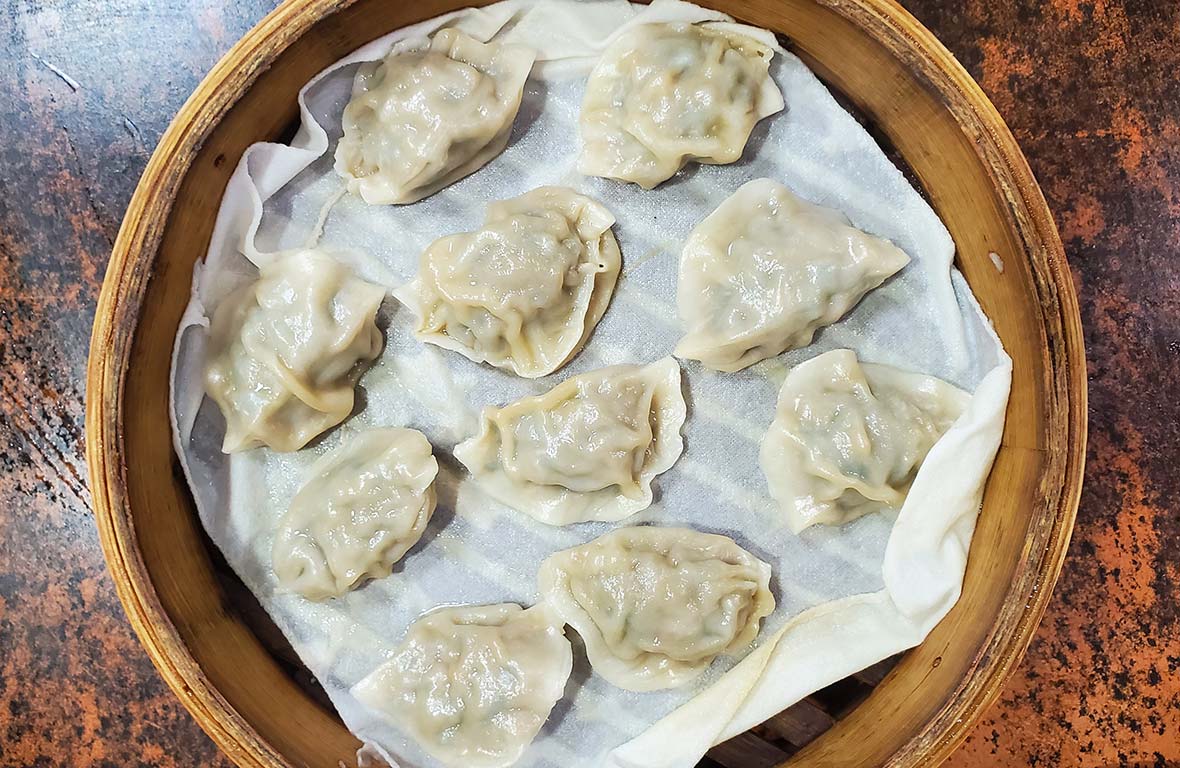
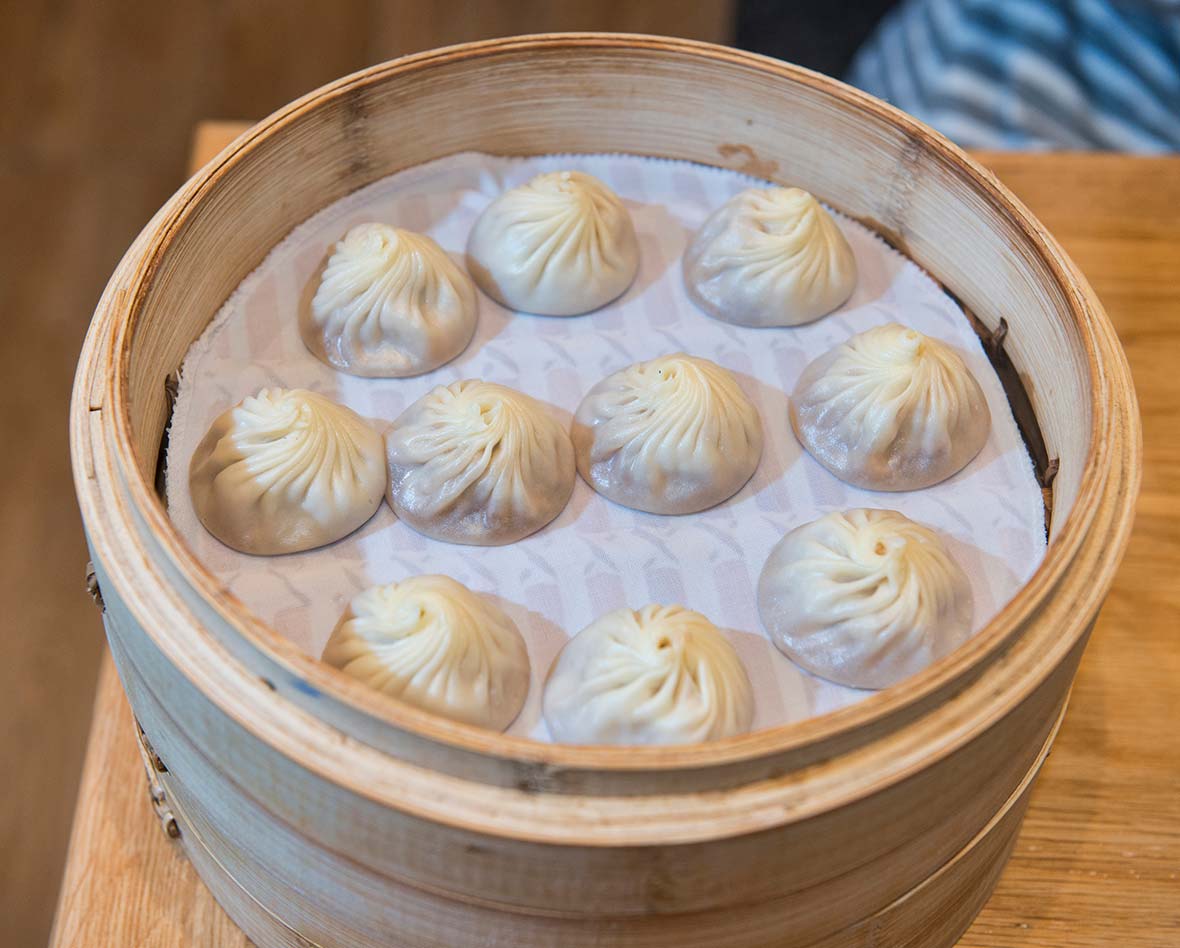
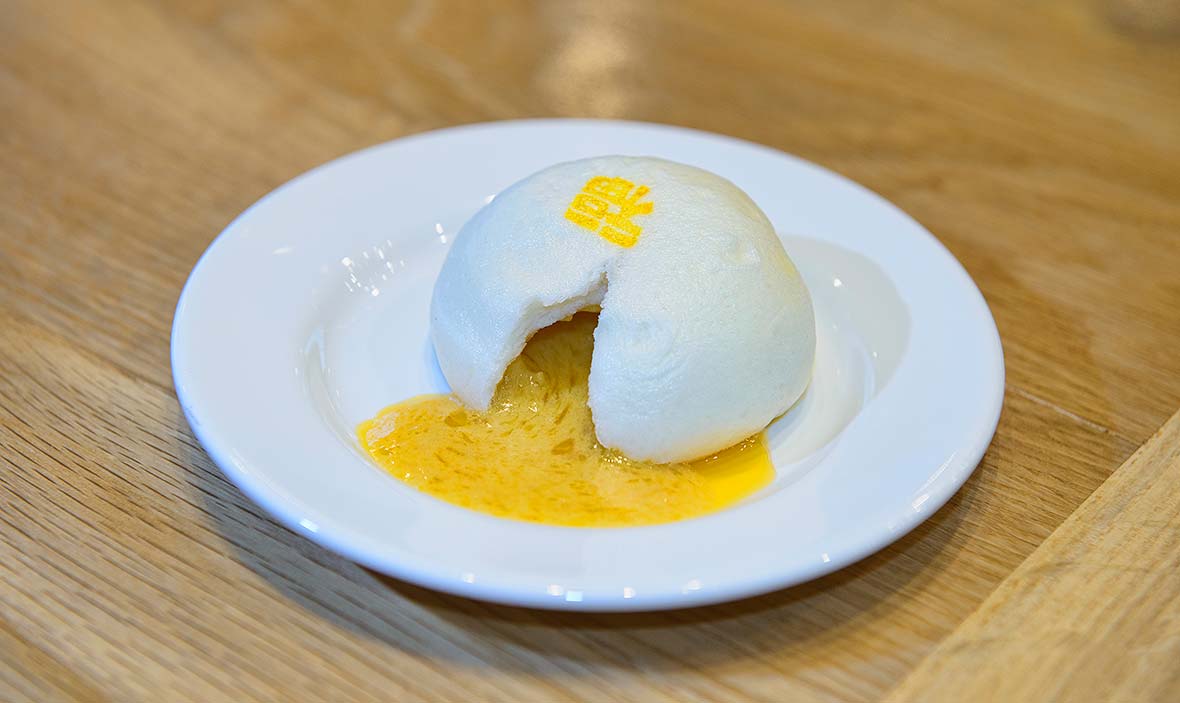
Stinky tofu is another Taiwanese classic. Soaked for days or months in fermented brine, it’s the hardest dish in Taiwan for non-locals to adjust to, as its odor has been likened to rotting garbage and unwashed feet.
Yet the locals swear by it, with the lines outside Dai’s House of Unique Stink attesting to the fact. Crouching Tiger director Ang Lee ate here and loved it. We weren’t ready to put it ahead of beef noodles, but it was wonderful to see the Taiwanese so proud of their culinary culture and faithfully supporting their national dishes.
Even the classiest joints in Taiwan have humble beginnings. A cooking oil delivery man and his wife started up a xiaolongbao steamed soup dumpling restaurant after their oil business went sour. Today, Din Tai Fung has branches across the globe, winning Michelin awards for its exquisite 18-fold dumplings. The original branch at Xinyi is still around, or you can opt for something a bit more elegant at the restaurant at Taipei 101. And yes, you will likely have to queue for an hour or more at both branches.
While Taiwanese don’t seem to mind the tradeoffs of long lines for fantastic cooking, one of the ways to somewhat beat or join the crowds is by going to the abundant night markets across the country. Hundreds of vendors set up shop at these, and it’s common to see different family members lined up at different stalls, ensuring a constant parade of snacks.
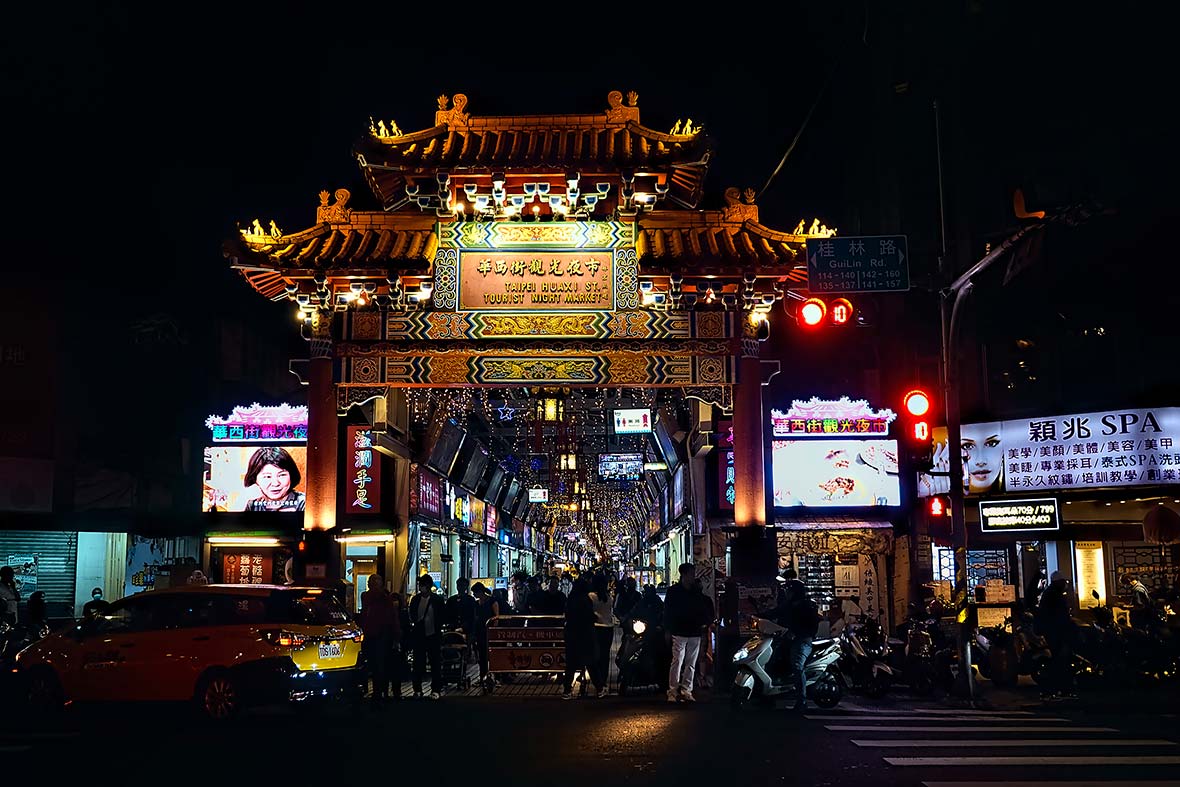
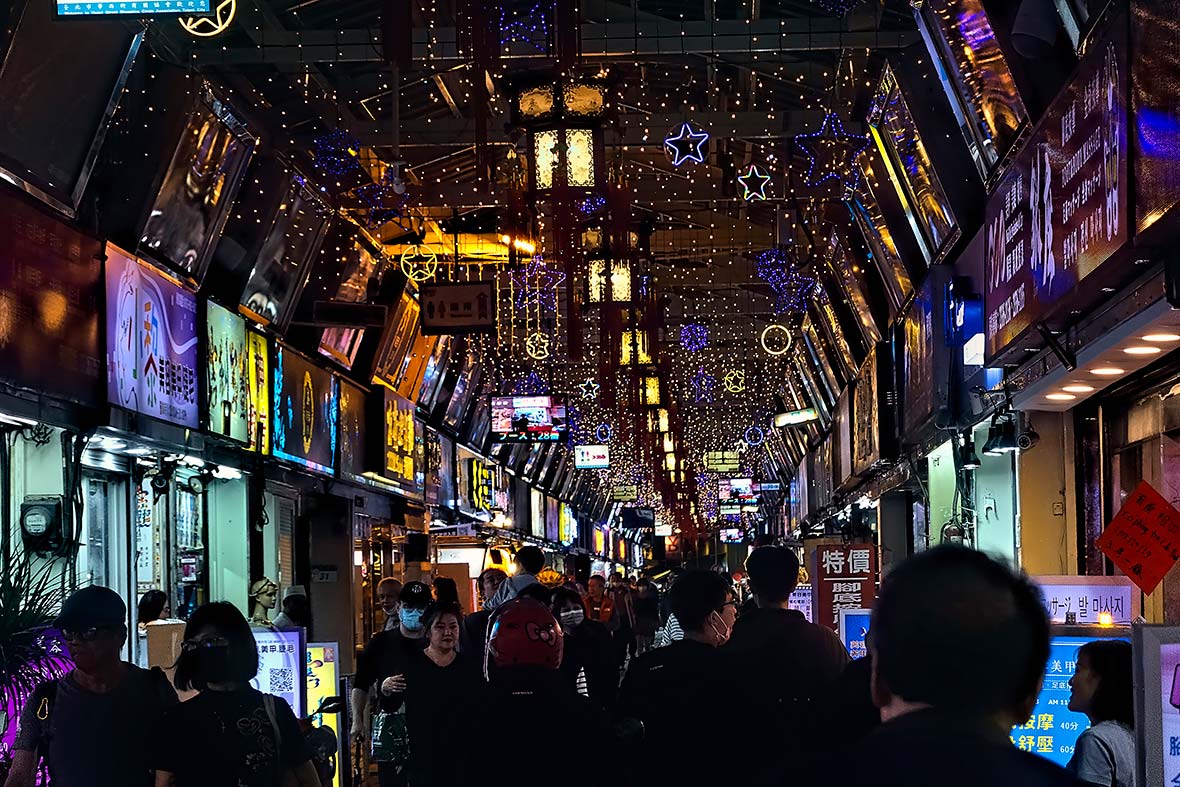
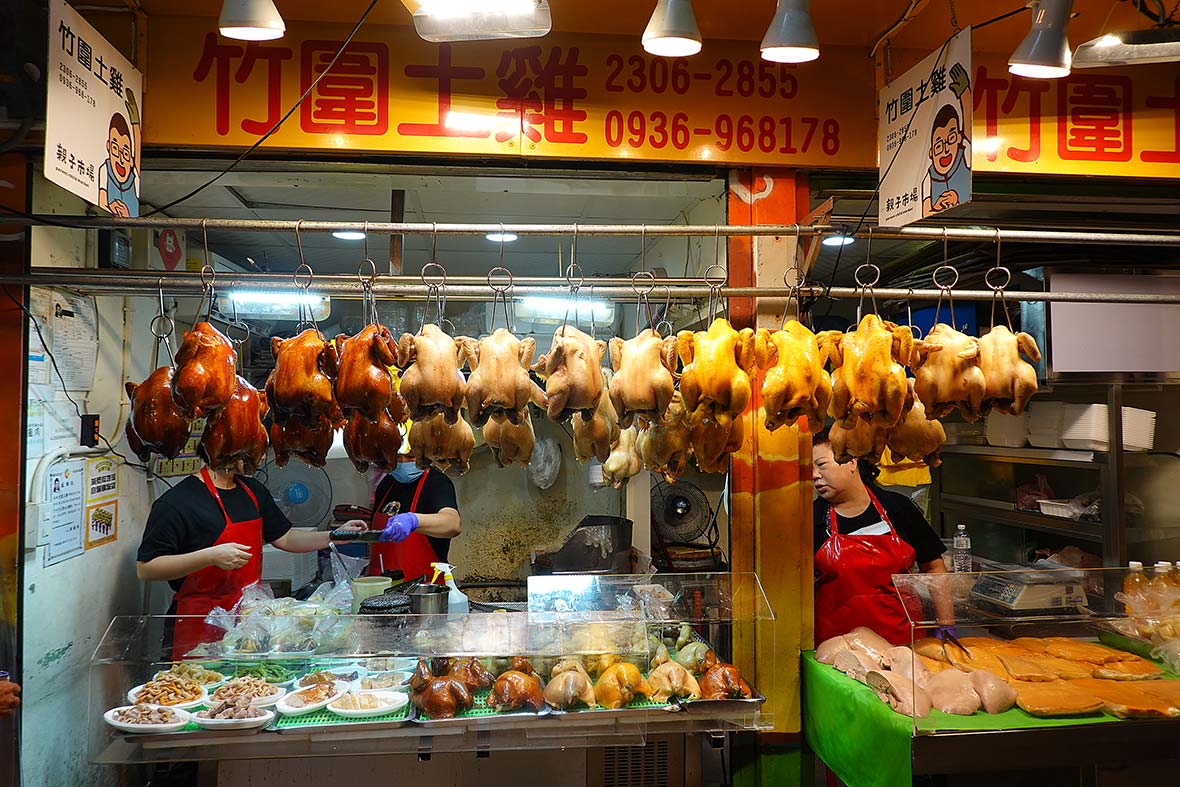
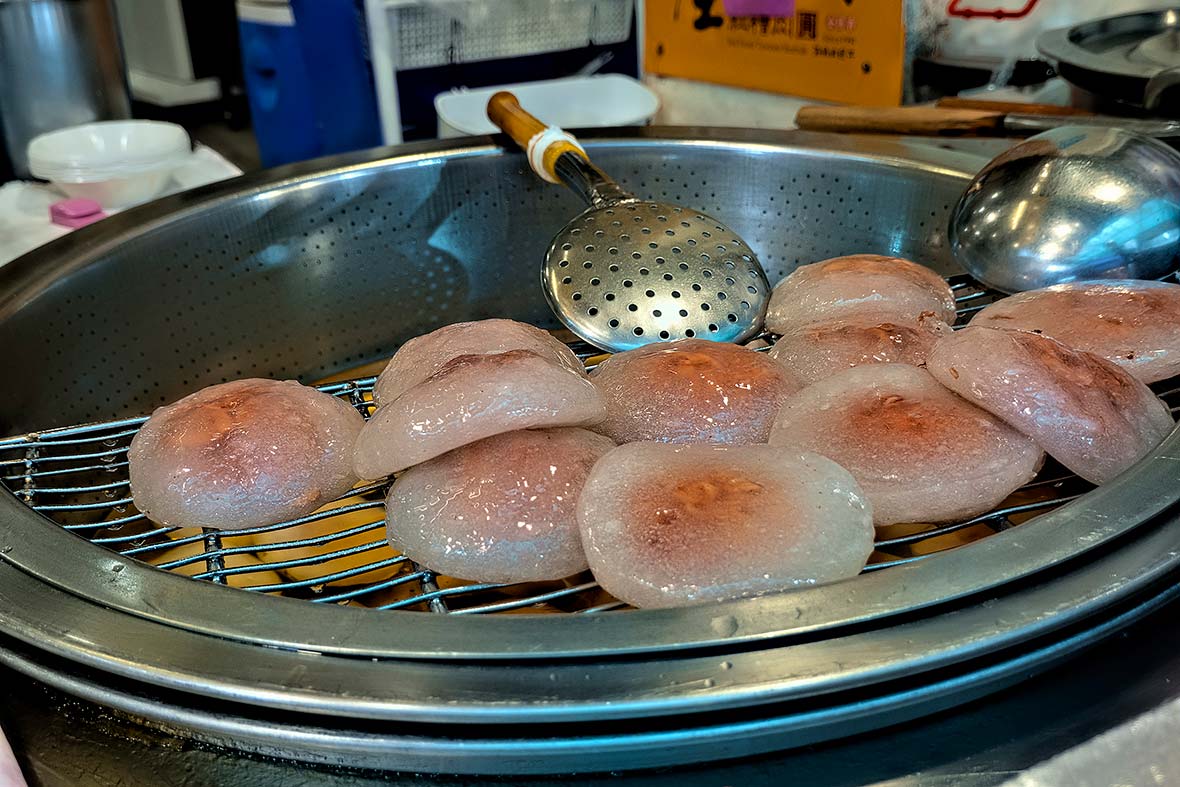
At Sun Moon Lake, a beautiful lake surrounded by the Central Mountain Range, the aboriginal Thao ethnic group dominates the local night market vendors, serving skewers of wild boar and roasted mochi made with millet instead of rice.
The bestsellers were massive pork burgers made by an elderly woman who used eggs instead of bread as a bun, and then a family-run fried cabbage bun stand, where people lined up for 30 minutes hoping to grab a stuffed dough ball full of goodness before they sold out.
Taipei is full of night markets, and we headed over to Huaxi, one of the more infamous ones. The meaning of Huaxi in Chinese is “Snake Alley,” as this used to be where snake blood and other reptile parts were served. Huaxi was the city’s biggest red-light district. Some older locals still might give you a leer if you mention going there. But these days Huaxi has become another culinary hotspot, with several stalls given Michelin recognition.
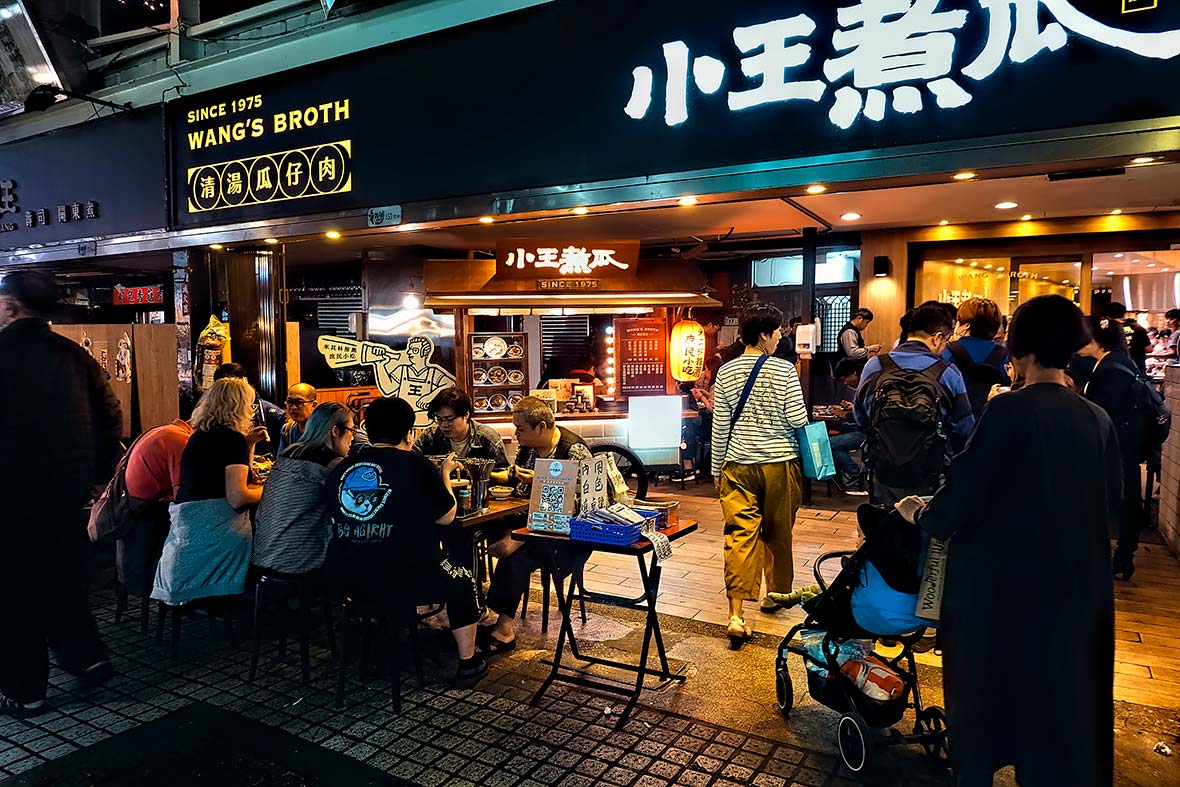
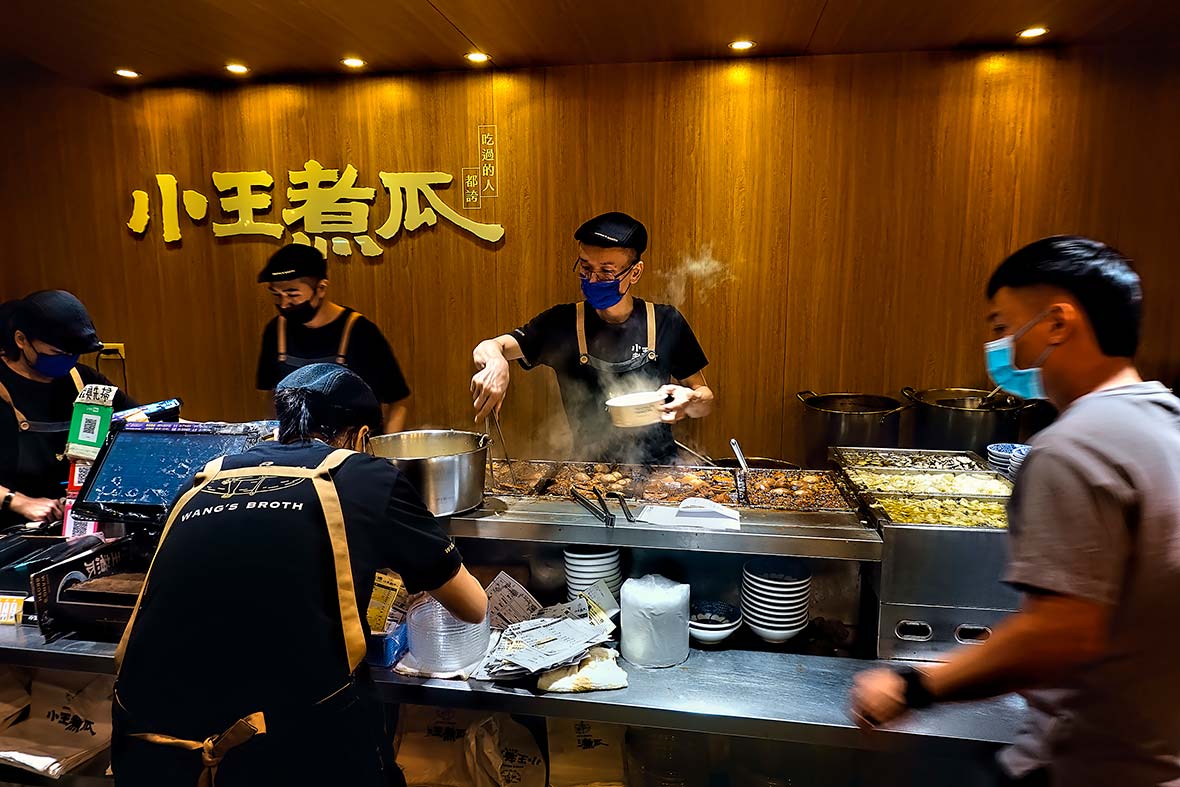
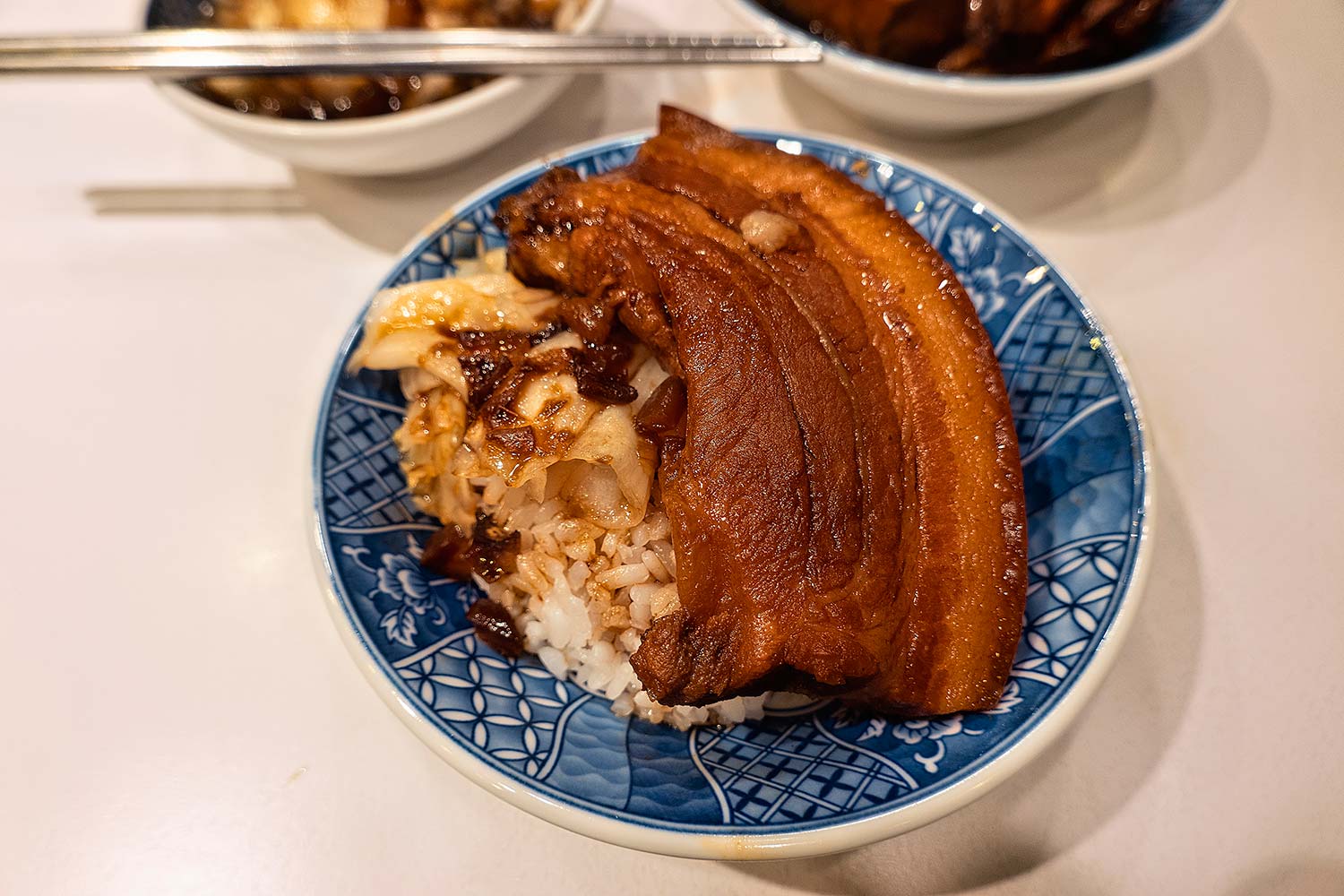
We called in at Wang’s Broth, which specializes in lu rou fan, braised pork on rice, right up there with beef noodles and stinky tofu as a Taiwanese staple. The pork belly used here is melt-in-your-mouth soft, and the caramelized sauce on top of it is known as “black gold.” Every single diner had a plate of it in front of them, and when you start crunching numbers in your head at these small establishments, looking at how many bowls or plates of one dish they are serving per lunch or dinner, you realize they are making a very respectable living.
Besides night markets, Taiwan has a ton of places known as “old streets,” often narrow alleys in historic small towns clinging to mountain slopes, which are just an excuse to graze and purchase local specialties. The most famous one is Jiufen Old Street, where a small mountain village just outside of Taipei hit prosperity when gold was discovered in its hills, and later became the backdrop for Hou Hsiao-Hsien’s award-winning film City of Sadness.
By mid-afternoon, the narrow alleys of Jiufen are like a rock concert, packed with tourists who go from shop to shop sampling taro balls, bubble tea, and jelly candies, taking respite to drink afternoon tea sets in the iconic A-Mei traditional tea house, set in a former blacksmith home that looks out on the surrounding misty mountains.
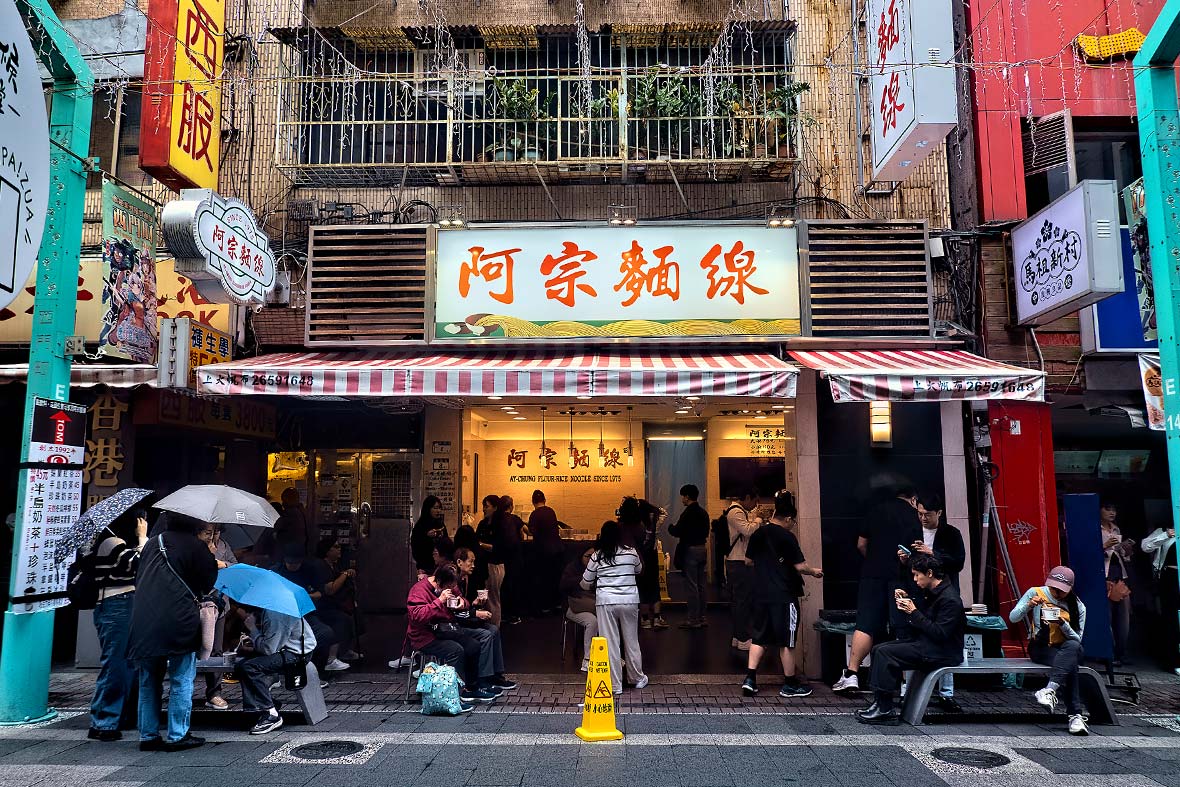
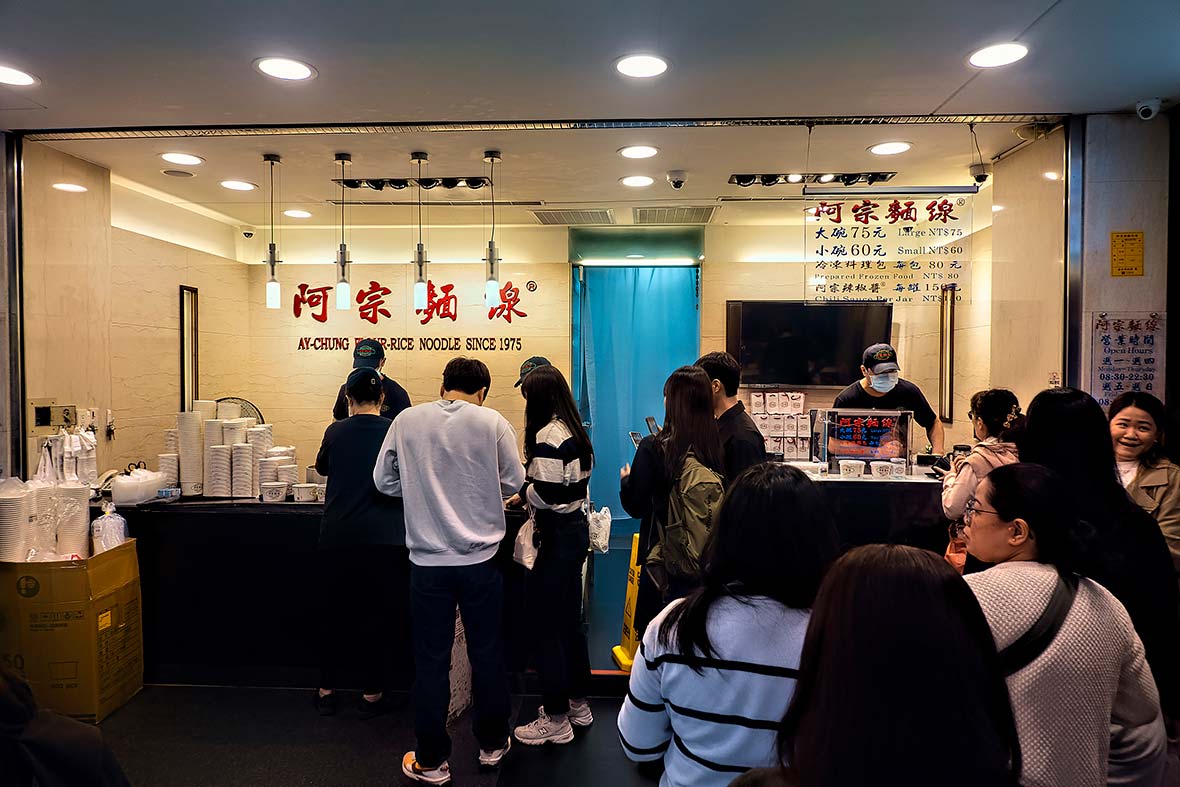
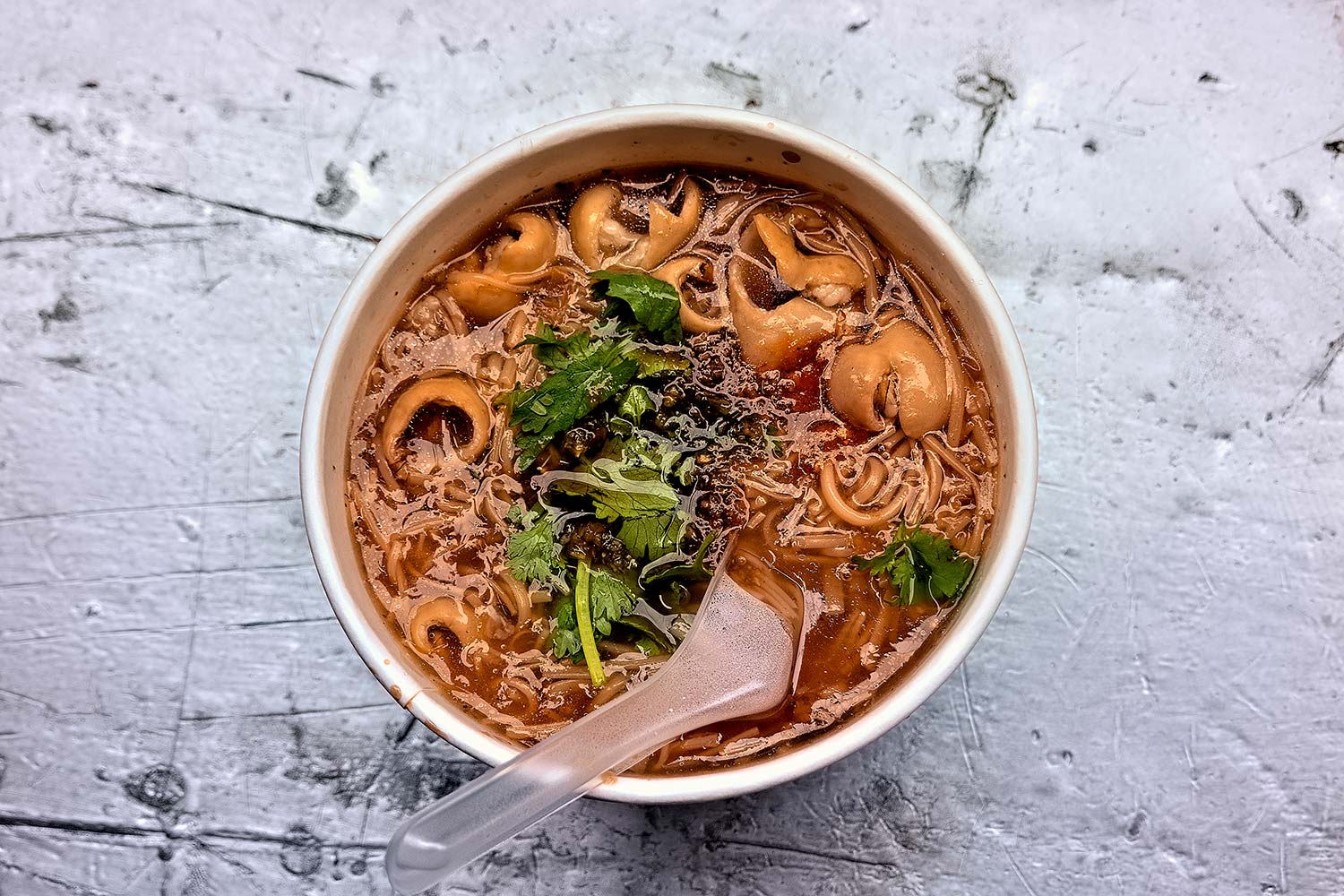
On our last morning in Taipei, we headed out for breakfast and didn’t have to walk far before we came across a queue. People all seemed to have just one item; a throwaway paper cup full of rather goopy noodles that looked like slop. There were also pig intestines in the servings, not to mention cheap plastic spoons to eat all this with.
Adding the long line and wet drizzle to the mix, we were about to give it a miss, but hey, this was Taiwan. We followed the crowd and soon had our bowl of goop. I dug in, expecting the worst, but instead was rewarded with wonderful sensations in my mouth, a mélange of flavors ranging from garlic to chili to vinegar, and then the essence of the dish, smoked bonito, along with the silky rice and wheat-based noodles which just made for a flavor bomb.
The place turned out to be another legendary establishment, Ay Chung Flour Rice Noodles, paying homage to its roots in China and making what was once only a poor man’s food into comfort food for the masses.
The noodles still only cost a few dollars a bowl, and I marveled over a stylish Lexus pulling up to the curb, its inhabitants getting bowls for takeout. Eating is for everyone in Taiwan. And waiting for it is half the fun.
